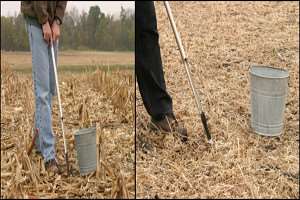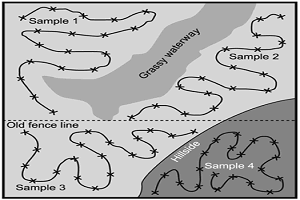The soybean cyst nematode (SCN) is capable of causing serious yield loss on soybeans every year and is widespread throughout Iowa and much of the Midwest. In the “good ole days,” a farmer was “good to go” with SCN management if he or she knew what fields were infested with the nematode and then grew SCN-resistant soybean varieties in rotation with the nonhost crop corn. Nowadays, though, things are a little more complicated.
The fact is, your SCN numbers may be building up unbeknownst to you. This buildup can go unrecognized because a soybean crop often does not appear stressed above ground, even though SCN numbers are building up below ground and yield loss is occurring.
What causes buildup in SCN numbers?
The buildup in numbers can occur by growing soybean varieties that are described as SCN resistant but do not provide full protection against the nematode. Some varieties are described as moderately resistant instead of resistant to SCN. Farmers are advised to grow soybean varieties that have the strongest SCN control.
Also, full SCN resistance in soybean requires multiple genes from the breeding line that is used to develop the variety (such as PI 88788 or Peking). Not all varieties on the market described as SCN resistant possess all of the available resistance genes, a condition which leads to less than full nematode control. Iowa State University tests the nematode control and agronomic performance of many SCN-resistant soybean varieties in experiments conducted throughout Iowa each year. The results of the work, funded by the soybean checkoff through the Iowa Soybean Association, are posted online at www.isuscntrials.info. A hard copy report of the results of the 2016 experiments will be mailed as a special insert in the January 14, 2017, issue of the Iowa Farmer Today.
An inadvertent buildup in SCN numbers also can occur by growing SCN-resistant soybean varieties with the same source of resistance repeatedly in the same field, causing a shift in (or selection for) the SCN population with increased ability to reproduce on the source of resistance. The increased reproduction of SCN populations in Iowa fields is a real problem because almost all SCN-resistant soybean varieties available to Iowa farmers contain resistance genes from one breeding line, PI 88788.
How would you know if your SCN numbers are building up?
The only way to know the status of the SCN infestation in a field is to collect a soil sample and have it tested. Specifically, farmers should collect soil samples to determine their SCN numbers before every 3rd soybean crop.
Collecting soil samples to check for SCN and to determine its numbers is not difficult. And this fall is a great time to sample fields in which soybeans will be grown in 2017. A few simple guidelines to follow are:
- It is best to use a soil probe, not a spade, to collect soil cores.
- Samples can be collected following a soybean or corn crop (Fig. 1).
- Collect 8-inch-deep soil cores.
- The more soil cores collected from the smaller the area, the more accurate the results will be. Collecting 15 to 20 soil cores from every 20 acres often is recommended.
- Collect samples from different management zones in a field, if such zones exist (Fig. 2).
- Combine all soil cores in a bucket and mix them well before placing the mixed soil into a soil sample bag.
- Most private soil testing labs in Iowa can process samples for SCN.
- SCN samples also can be sent to the ISU Plant and Insect Diagnostic Clinic, room 327 Bessey Hall, Iowa State University, Ames, IA 50011, 515-294-0581.

Figure 1. Sampling for SCN can be done after harvest in corn or soybean fields. The soil samples can be collected up until the ground freezes or snowfall occurs.

Figure 2. Example sampling pattern for collecting soil samples for SCN in different management zones in a field.
Testing for increased reproduction of SCN on resistant varieties
If SCN numbers are unexpectedly high and yields of SCN-resistant soybean varieties have started to decline for no apparent reason, it might be worth having something called an HG type test (HG stands for Heterodera glycines, the scientific name for soybean cyst nematode) conducted on a sample from the field to determine if the SCN population in the field has developed increased reproduction on soybean varieties with the PI 88788 and the other sources of resistance. Consult the ISU Plant and Insect Diagnostic Clinic at 515-294-0581 or pidc@iastate.edu for instructions on how to collect and submit a sample for HG type testing.
More information about SCN
More information about the biology and management of SCN is available at www.soybeancyst.info and soybeanresearchinfo.com. Iowa State University’s management recommendations for SCN are available online in a downloadable format, Soybean Cyst Nematode (SCN) Management Recommendations, IPM 63.
Links to this article are strongly encouraged, and this article may be republished without further permission if published as written and if credit is given to the author, Integrated Crop Management News, and Iowa State University Extension and Outreach. If this article is to be used in any other manner, permission from the author is required. This article was originally published on October 31, 2016. The information contained within may not be the most current and accurate depending on when it is accessed.
Source: iastate.edu